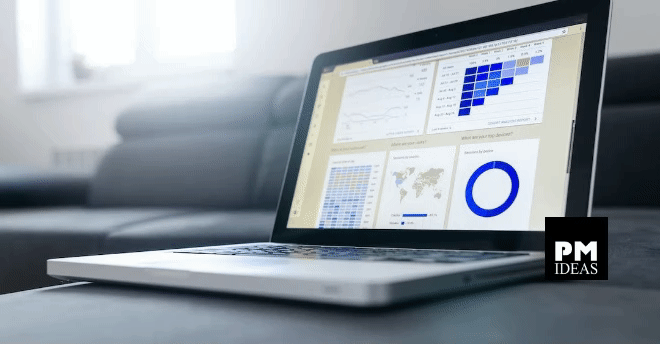Shane Drumm
https://projectmanagers.net/wp-content/uploads/2024/03/Fast-Tracking-vs-Crash-Planning.png

Project tracking vs. crashing is two project management schedule compression techniques to speed up a project. Fast-tracking is when tasks planned to happen in sequence now happen in parallel. Crashing involves adding more resources to the functions to complete the work quicker.
While fast-tracking and crashing can be helpful techniques, project managers should exercise caution, as they can have negative consequences if not used correctly. When project managers are looking to compress project schedules, they should carefully assess project constraints and objectives before deciding to fast-track or crash project activities.
Fast-tracking is a project management technique in which project managers coordinate overlapping tasks to perform multiple tasks simultaneously. This overlapped work allows tasks to be completed sooner than if performed sequentially. Fast-tracking is most effective when there is some slack in the project schedule, when time is available between tasks to overlap work.

Crashing is a project management technique where project managers reduce the time spent on individual tasks to get the project back on schedule. While project managers can reduce time spent on project tasks through fast-tracking and crashing, these techniques tend to have negative consequences if not used correctly. For example, while project managers may be able to shorten project duration by reducing task work hours or increasing resources, doing so has a high risk of project quality issues and missed project objectives.
| Fast Tracking | Crashing |
|---|---|
| No extra costs for the project | Add resources to project |
| No extra costs for the project | Extra cost for the resources |
| Increase risks | No significant increase in risks |
Project Fast Tracking
Project fast-tracking is a management technique employed to speed up project completion. It involves rearranging the sequence of tasks or activities to complete the overall project sooner.
There are many advantages to using fast-tracking. First, it can help save time and money. Completing the project sooner means you can avoid paying for it to run longer than necessary. Additionally, fast-tracking can help improve communication and coordination among team members, as tasks are completed more timely. This can lead to a more productive and efficient team.
Risks of Fast Tracking a Project
There are risks associated with the technique. When fast-tracking, the project manager may not have enough time to assess all risks and develop a mitigation plan properly. This can lead to unexpected problems and delays. In addition, adding resources to a project can increase costs and lead to communication problems. There is also the risk that the team will be unable to meet the expectations of the Project Sponsor or Project Stakeholders.
However, there are also some disadvantages. One potential downside is that attempting to speed up the completion of a project risks sacrificing quality. For example, if tasks are completed in a shorter time frame than usual, there is less chance for adequate testing or error checking.
One risk associated with using schedule fast-tracking is rushing, which can result in mistakes or poor-quality work being completed. To avoid this, the project manager must thoroughly plan the work before deciding how much can be compressed into a shorter time frame.
Overall, fast-tracking is a valuable tool for speeding up project completion. It can save time and money while improving communication and coordination among team members. However, it is essential to consider the advantages and disadvantages of fast-tracking projects. By doing so, you can use this management technique effectively while avoiding potential pitfalls.
Fast Tracking Example
Example or Scenario to Choose Fast Tracking: A small software company needs a single web page developed. The Project Manager opts for schedule fast-tracking and adds resources to complete the project in half the time originally planned. With Project Fast Tracking, the project manager delivered the web page in half the time and on budget.
Advantages of Project Fast Tracking
Choosing Fast Tracking has multiple benefits:
- A project manager can reduce the project duration
- Improve on-time delivery
- Increase productivity and decrease labor costs.
- It is also a great way to show leadership they are committed to meeting deadlines.
Project Crashing
Schedule crashing is a technique used in project management whereby activities are compressed into a shorter time frame. It can be used to speed up the completion of a project or to meet a specific deadline.
What is crashing in project management
Project schedule crashing works by reducing slack time in a critical path. Slack time is available for a task that does not have any predecessor tasks and, therefore, cannot be finished earlier than its successor task. If there is reduced or no slack time between tasks, then it is more likely that the critical path will be shortened.
To use crashing as a technique, follow these steps:
- Identify the critical path of your project.
- When you identify which tasks make up the critical path, rank those tasks from one to five, with one being a task that is the most important and five being the least important.
- Identify any predecessor or successor tasks for each task. If a task has no predecessor or successor tasks, it is on the critical path and will be considered for crashing.
- Eliminate tasks from your project according to their rank number; the lowest number of tasks should be eliminated first.
- After removing the tasks, recalculate your project completion time and determine if you could shorten the critical path with this method. If not, eliminate more tasks, return to step four, and remove additional low-ranking tasks until the critical path is shortened.
Crashing Examples
The most common example of schedule crashing is a project that must be finished by a certain date, and activities are compressed to meet this deadline.
Another example is when a project manager has more work than they can handle within their original schedule and needs to find a way to get the work done more quickly. In this case, this technique may involve adding staff or working overtime.
If you are considering using crashing in your project, it is essential to weigh the risks and benefits carefully. Make sure that you have a good understanding of what needs to be done and how much time is available to do it. If you are not confident in completing the project on time, it may be best to avoid schedule crashing.
Project managers often use schedule crashing when they need to meet a specific deadline. For example, if a company has a product that needs to be released by a particular date, the project manager will use the crashing method to meet that deadline.
<figure
Fuente: PMideas (Advantages of Fast Tracking vs Crash Planning).































